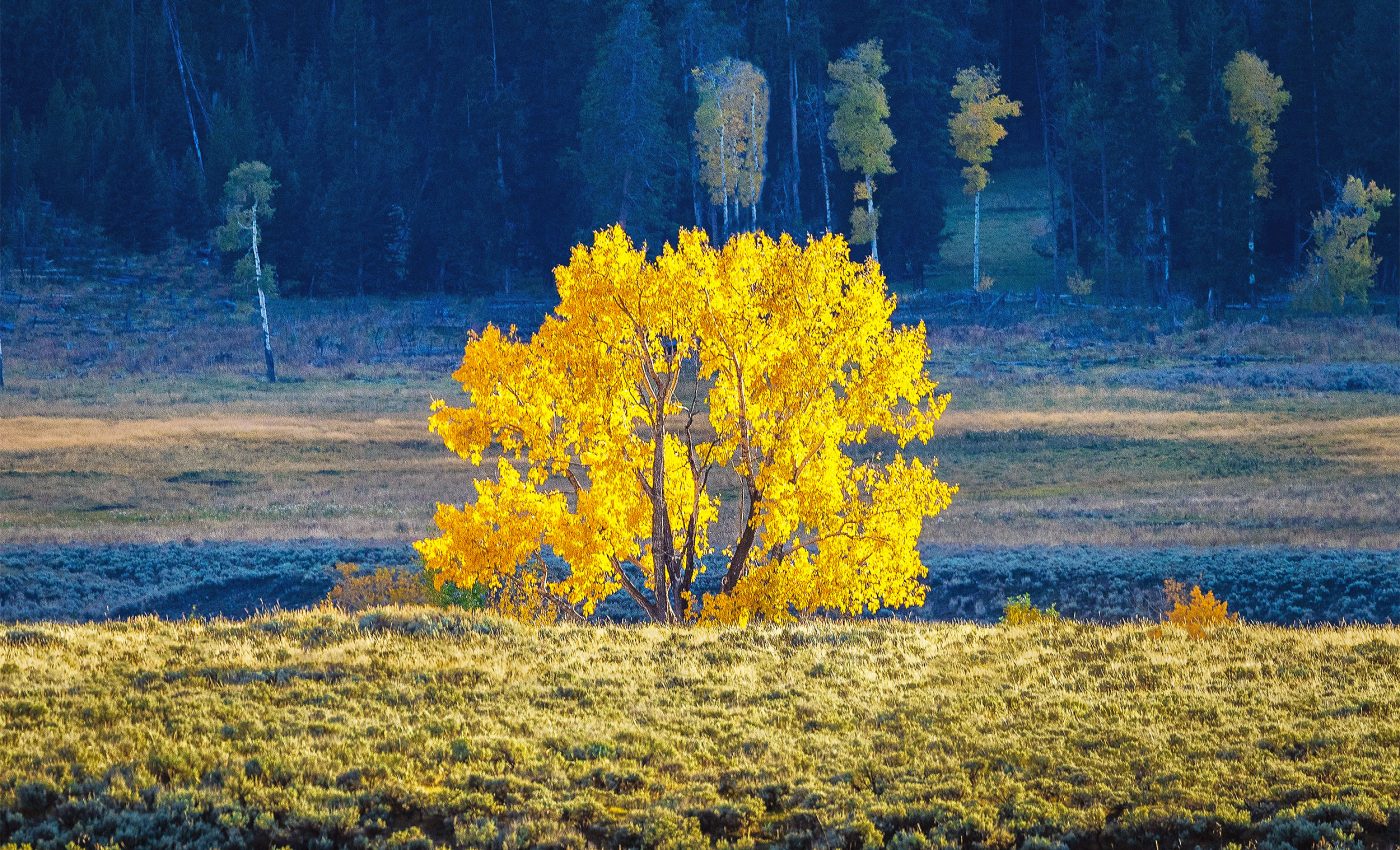
Yellowstone's aspen trees are growing again thanks to the reintroduction of wolves
Young aspen trees in Yellowstone are doing something they have not done in almost 100 years. Rather than sprouting and being eaten back to nubs by elk and bison, they’re actually growing into tall, adult forest trees rising up towards the canopy.
This matters more than it might seem, because it shows what happens when a missing piece of an ecosystem returns.
Yellowstone, aspens, and elk
In the 1920s, people eliminated wolves in Yellowstone. At the time, with limited scientific knowledge, managers believed it was the right thing to do.
Without wolves, elk herds grew very large. Elk love to eat aspen shoots – the tender young growth is highly palatable to them.
For roughly 70 years, elk browsed aspen sprouts down to stub height, and the trees couldn’t grow.
If you had walked through Yellowstone in the 1980s, you would have seen many tiny aspen shoots covering the ground, but almost no young trees gaining height.
The forest’s regeneration was stalled. Old trees died, and no new ones replaced them.
In 1995 and 1996, park managers reintroduced wolves into the Yellowstone Park ecosystem. Scientists hoped and wondered whether this would change anything for the trees.
Why aspen matter to Yellowstone
Aspen groves provide habitat for many species. Birds nest in them. Beavers eat the bark and use the wood for dams. Butterflies and moths lay eggs on the leaves.
Their canopy admits enough light for wildflowers and shrubs to grow beneath. When it rains, aspen groves hold water in the soil better than some other forest types.
In short, when aspen return, dozens of other species benefit. More trees support more insects, which in turn support more birds, enriching the ecosystem.
Checking the trees three decades later
Luke Painter, an ecologist at Oregon State University, sought clear answers. His team returned to 87 aspen stands across Yellowstone that scientists had previously surveyed.
They measured thousands of young trees, looked for bite marks, and counted how many stems were tall enough that elk could no longer reach the tips.
About a third of these stands now have many tall young aspens pushing toward the canopy.
“About 26 of the 87 aspen stands we examined had large numbers of tall saplings throughout, a remarkable change from the 1990s when surveys found none at all,” Painter said.
Why wolves matter to Yellowstone aspens
Breaking it all down, the conclusions of this study are pretty simple.
Wolves hunt elk. When wolves came back, two things happened. First, elk numbers declined from unusually high levels. Second, elk changed their behavior. They spent less time in the same areas feeding.
With fewer elk and shorter feeding bouts, more aspen shoots survived long enough to exceed the browsing zone – about six to seven feet high.
Once a sapling reaches that height, elk cannot easily reach the growing tip. The tree continues to grow.
“The reintroduction of large carnivores has initiated a recovery process that had been shut down for decades,” Painter explained.
Scientists call this a trophic cascade – when adding or removing one species causes changes that ripple through the whole system.
Some places recover, others don’t
Unfortunately, not every aspen stand has recovered yet. Some valleys still have many short, heavily browsed shoots, because it’s not only elk eating them anymore.
Bison herds have grown, and bison browse on aspen as well. They are strong enough to break young trees.
“Increasing numbers of bison may be emerging as a new constraint to aspen in some areas,” Painter confirmed.
Additionally, winter snow depth varies; droughts stress trees; bears and mountain lions also hunt elk; and hunting outside the park influences elk distribution.
All of these factors interact, which is why some sites show strong recovery, others show moderate recovery, and a few have changed very little.
The key pattern is that places with many tall saplings experience little browsing, and aspen groves that remain popular eating grounds today stay short.
This fact is the strongest indication that tree recovery is linked directly to wolf presence, not solely to weather or soil conditions.
Proof in the measurements
Painter’s team did not rely on casual observation. They used the same methods as earlier researchers, measuring the same plots.
They counted recruitment – when young trees surpass browsing height and begin progressing toward maturity. This measure is crucial. Sprouts are insufficient if they never grow; without recruitment, the forest cannot replace itself.
The results are robust. After being stalled for most of a century, Yellowstone’s aspens are increasing in height. In recovering stands today, you will see saplings – six, eight, or ten feet tall – that were not present in the 1990s.
The future of Yellowstone’s aspens
“This is a remarkable case of ecological restoration,” Painter concluded. “Wolf reintroduction is yielding long-term ecological changes contributing to increased biodiversity and habitat diversity.”
Trees grow slowly, so even with wolves restored, it will take decades for these young aspens to form a full-grown forest.
Some areas might never fully recover if bison numbers continue to rise or if the climate becomes too hot and dry.
Thanks to the work of Painter and his team, scientists are now certain that restoring the Yellowstone predator has restarted aspen forest regeneration. Not everywhere and not perfectly, but enough to be measured, creating hope for the future.
The full study was published in the journal Forest Ecology and Management.
—–
Like what you read? Subscribe to our newsletter for engaging articles, exclusive content, and the latest updates.
Check us out on EarthSnap, a free app brought to you by Eric Ralls and Earth.com.
—–













